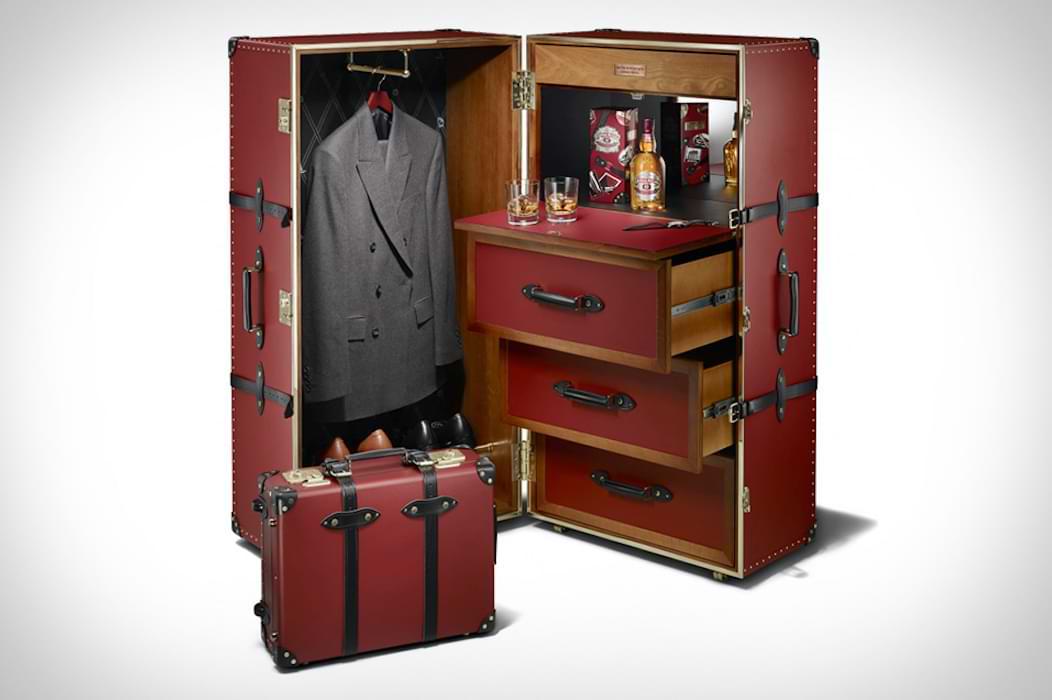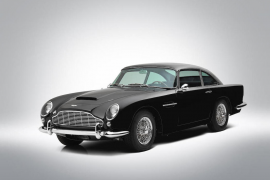Most inventions are a child of their time. So it’s not surprising that many of these are replaced by more practical variants over time. This is particularly true of the luggage we use when travelling.
Travelling was a pleasure enjoyed by a few at the beginning of the 20th century. Firstly, travel was very expensive, which meant that only the rich could indulge in this pleasure.
Secondly, it was very time-consuming and made it impossible for farmers, for example, to be away from their work for so long. Even the revolutionary advent of rail travel at the end of the 19th century did not change the fact that it took a long planning horizon and a deep purse to realise pleasure trips and engage in the kind of tourism that we take for granted today.
It was only when air fares were brought down that travel became a widespread pleasure even for the middle classes across the West.

The luggage used for travel usually reflects the era in which it was made. Nowadays, air travel is very widespread and in most cases people are allowed to take luggage of a certain size and weight. In the case of the means of transport used in the late 19th and early 20th centuries, which were mainly trains and boats, there were no real requirements as to the size or weight of luggage. This also meant that the availability of skilled labour was the main limiting factor.
For the well-off, this was not an obstacle, which meant that people could often carry very large luggage on their journeys. One particular type of luggage that we have taken an interest in is the so-called Wardrobe Trunk, which became increasingly common in the early 20th century.
For understandable reasons, this is a somewhat impractical piece of luggage to carry on journeys among the common man nowadays. Unless you have the luxury of private flights and/or private attendants on your travels, it is hardly convenient to carry luggage of these dimensions.

As these trunks had/have pull-out drawers on one side and clothes hangers on the other, these must be on the end when they are opened. Other more exclusive models were also produced with everything from bar cabinets to work tables integrated into these travel wardrobes.

The travel wardrobe was thus essentially a mobile wardrobe. As travelling wardrobes were usually very large and heavy, they were mainly used during long journeys by ship or train. They began to appear on the market in the early 20th century and became very popular from the 1910s until the early 1950s. With the rise of air travel and its demand for less bulky luggage, travel wardrobes became increasingly rare in the following decades.
Nowadays, these luggage items are often incorrectly referred to as Steamer Trunks in English, named after the storage location of these luggage items on steamships. These luggage items appeared on the market in the late 1870s and were thus slightly earlier in appearance than the wardrobe variety.

Looking around the market at manufacturers of travel trunks, there were many different manufacturers in the early 1900s. These included brands such as Hartmann, Indestructo, Goyard, Winship, Corbin and Parkhurst just to name a few.
However, one brand that deserves a separate mention is Louis Vuitton, which has produced some of the most luxurious and eye-catching models of travel wardrobes throughout history. A testament to the quality of Louis Vuitton luggage is the many well-preserved models that are still on the market today. Here is an example of a model from the venerable brand, without the distinctive pattern usually found on Louis Vuitton bags and luggage.

Another type of Louis Vuitton “travel wardrobe” from the early 1900s with a cocktail bar, humidor and space for over 300 cigars. As a proof of their exclusivity, these travel wardrobes command very high prices on the market today.

A further example of Louis Vuitton’s ingenuity when it comes to exclusive luggage is the “Stokowski”, named after Leopold Stokowski and launched in 1936. Perfect for those who wish to work while travelling.
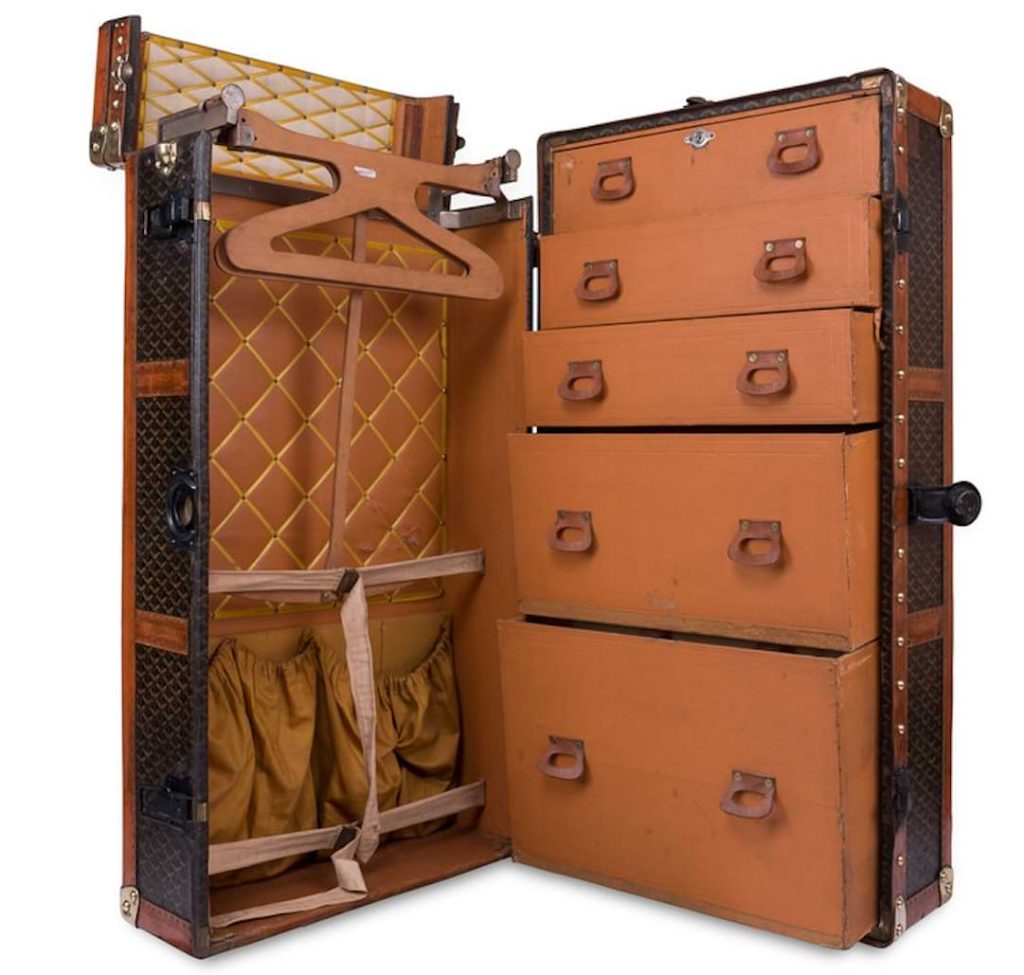
Another French brand with about as long a history as Louis Vuitton is Goyard, founded in Paris in 1853. Here is a well-preserved Goyard example from between 1900 and 1910.
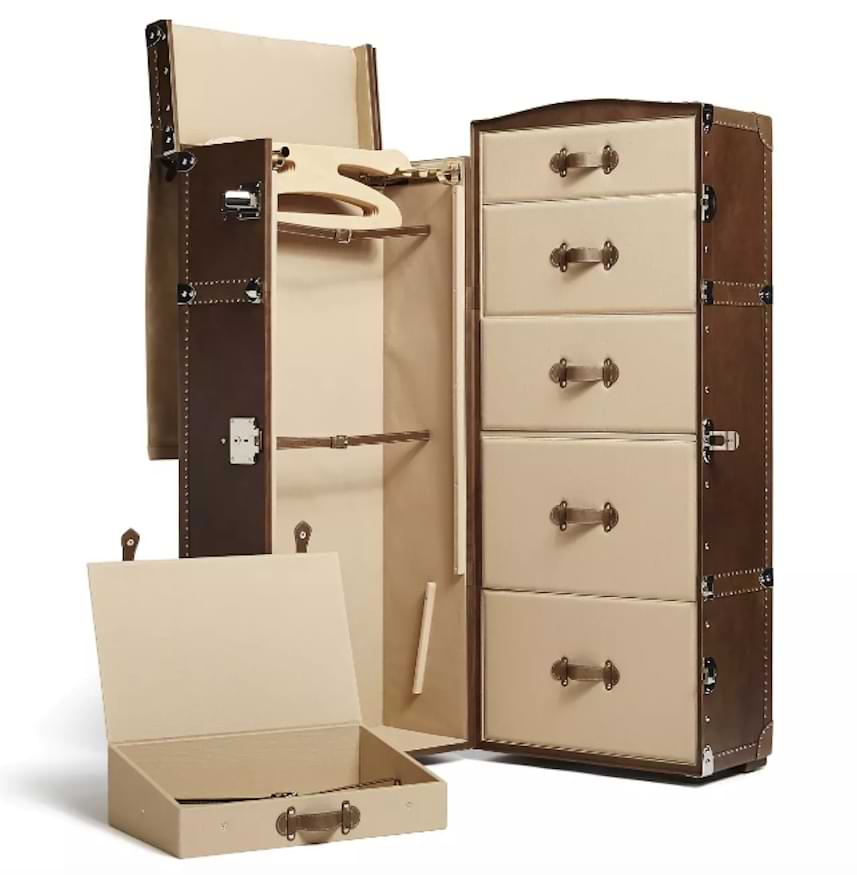
So what does it look like today? Are there any new editions on the market at the moment? Although for natural reasons this type of travel wardrobe is no longer produced to the same extent, there are still those who produce larger versions of travel wardrobes. For example, there is this “Wardrobe Trunk” from luxury bag manufacturer Ghurka.

If you’re looking for a more affordable option, this version from Stateroom Armoire is available in both off-white and, as here, black.
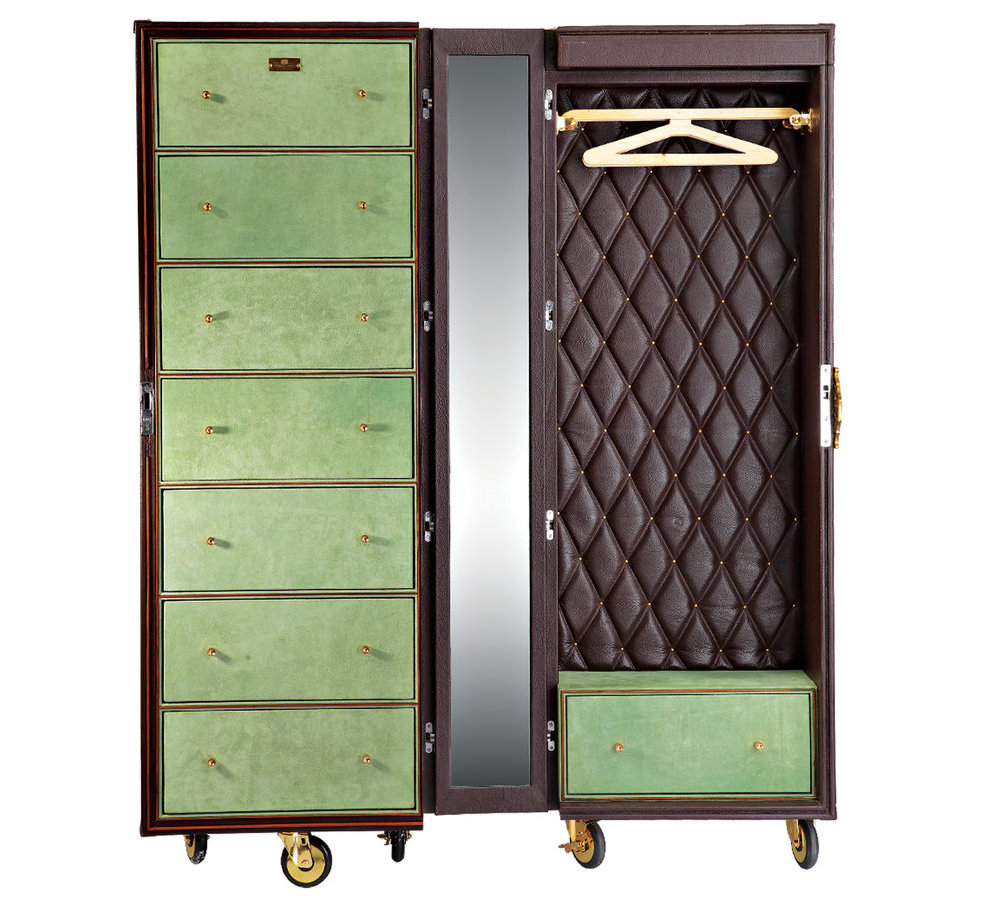
The Indian Trunks Company is a relatively new company that focuses on upscale, luxury luggage with old-world charm. Here, a travel wardrobe in beautiful color and stylish details.

